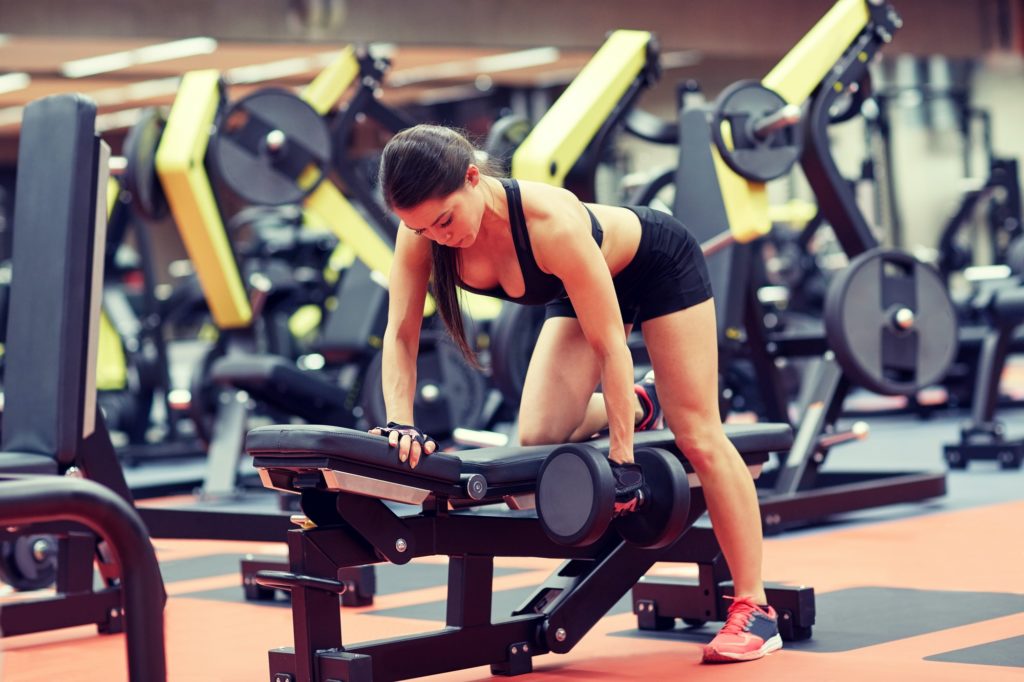I love training the back. To me nothing sends the message of “I lift weights” more so than someone who has an impressive looking backside.
And one of my favorite exercises to train the back is the 1-arm DB Row.

That said, most people don’t perform it correctly. In fact, I’d bunch both the 1-arm DB row and push-up together as two exercises most people roll their eyes at and think are easy, but fall woefully short in terms of passing the eyeball test.
You know the saying: if it looks like crap….
I’m not going to belabor the obvious talking points here. Most people understand that a good DB Row is performed with:
- An anatomically “neutral” spine position: the upper doesn’t round, and the head doesn’t protract forward.
- The elbow not going too far back (to the point where there’s excessive glenohumeral extension, and subsequent anterior laxity of the shoulder).
- To the point above, the arm should move in more of an “arc” movement (forward to back) rather than straight up and down. While there is scapular retraction happening (more on this below), I feel the 1-arm DB row is more of a lat exercise than it is an upper back exercise. I like to cue people to think about bringing their elbow toward their hip rather than straight up and down.
However, none of this matters if your name is Matt Kroczaleski and you’re a beast:
NOTE: don’t hate on me for the music. Chris Howard had control of the stereo during CSP after hours.
As noted above I do feel the 1-arm DB row is a fantastic upper back builder, but that it’s more suited for lat development than it is building superior scapular retractors. This isn’t to say it can’t (or shouldn’t be used) in that fashion, it can! But if we can appreciate the fiber orientation of the lats in conjunction with the actual arm (arc) action being performed with the exercise, we can then better appreciate why it shouldn’t be at the top of the exercise hierarchy with regards to training scapular retraction.
But lets discuss scapular retraction.
A common cue used with the 1-arm DB Row is to retract (adduct) the scapulae (shoulder blade) and then to “pin” it there throughout the duration of the set. Like this:
I believe this is wrong and goes against common shoulder joint mechanics. By pinning the shoulder blade in place you’re essentially forcing yourself to gain the brunt of motion through the glenohumeral joint, which can lead to more anterior (forward) translation of the joint itself; causing more anterior laxity.
In addition, keeping the shoulder blade retracted the entire time can lead to rhomboid dominance, which in turn can (not always) result in muscular imbalances such as downward rotation syndrome; a term popularized by physical therapist Shirley Sahrmann in her book Diagnosis and Treatment of Movement Impairment Syndromes.
And as we all know, downward rotation syndrome kills kittens. True story.
You don’t want to kill kittens do you?
Instead I prefer to coach people to allow their shoulder blade to move; or breath. Like this:
The shoulder blade should move around the rib cage.
So instead of gluing it in place, the shoulder blade has room to breath – can move – and can work in a more synergistic fashion with GH joint. You work the scapula both concentrically and eccentrically.
NOTE: you still want to avoid end-range on the way down and control the load. You should feel a nice “stretch” in the bottom position – not to the point where you’re “hanging” on passive restraints – and then return back.
It’s a subtle tweak, but has a profound influence on the efficacy of the exercise and shoulder health in general.1 Give it a try the next time you perform the 1-arm DB row and notice if you feel a difference.



